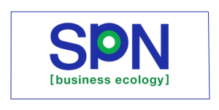HIGH PERFORMANCE DESIGN
High performance design achieves multiple benefits for developers, investors, asset managers, and occupants yielding superior asset value, and enhanced environmental and social performance. These benefits include:
- Reduced capital costs
- Reduced operating costs
- Reduced liability
- Health and productivity gains
- Access to new markets
- Product differentiation
- Increased valuation
- Accelerated sales
Master Planning
Sustainable development requires a master plan to maximize the inherent site conditions while minimizing adverse social, economic and environmental impacts. We provide master plan guidance in three phases:
I – DISCOVERY
Understand site constraints and opportunities:
- Land Use and Utilities Review – zoning, code, availability of utilities and incentive programs
- Program Analysis – proposed use, density and connectivity
- Environmental and Ecosystem Analysis – ground and surface conditions, natural habitats
- Seasonal Climate Research – precipitation, humidity, wind and sun
- Water Resource Analysis – potable, reclaimed, grey and waste water
- Energy Resource Review: renewable and non-renewable
II – CONCEPT GENERATION
Develop strategies and options:
- Circulation – vehicular, pedestrian
- Landscape – ecosystems, microclimates, xeriscaping, permeable surfaces, hardscapes
- Enclosure – climatic response, massing, and materials
- Energy – demand reduction, efficiency, on-site and off-site renewable and non-renewable sources, management systems
- Water – demand reduction, efficiency, reuse and recycling, storm water management
- Lighting – orientation, daylighting, shading, pollution reduction
III – REFINEMENT
Develop strategies and options:
- Systems Integration – master plan design development
- Financial Analysis – incentives, payback periods, return on investment
- Design Guidelines – development of recommendations for building parameters
- Master Plan Delivery – documentation of master plan and final recommendations
Project Design
Integrated design is a collaborative process that harnesses the talents and insights of the project team to increase value, maximize efficiency and optimize results through all phases of design, fabrication, and construction.
From concept design through project completion, teams are guided by value-based decision making to achieve
the project’s sustainable development goals. Considerations include:
- Building Response to Climate
- Potable Water Use
- Energy Use
- Heat Island Effect
- Landscaping
- Heating and Air Conditioning
- Alternative Energy Sources
SCHEMATIC DESIGN
SPN conducts an Eco-Charrette to identify opportunities for sustainability early in the design process. We study energy conservation measures, assist in the creation of the Owners Project Requirements (OPR) document, and develop an Opportunities Report highlighting viable sustainability strategies for the project.
DESIGN DEVELOPMENT
SPN guides the development and documentation of sustainable architectural and MEP solutions. We provide design input, performance specifications and product/technology solutions to the project team; and work with the CM to provide cost-benefit analyses on preferred sustainability strategies.
CONSTRUCTION DOCUMENTS SPN reviews CDs to ensure that selected sustainable design strategies have been appropriately integrated in the project. Our team assists with contractor RFIs and bids related to sustainability, and works with subcontractors to obtain the appropriate documentation.
CONTRACT ADMINISTRATION During construction our team works with the General Contractor to ensure the building is aligned with design intent. Upon construction completion and after occupancy, SPN provides the project team with a sustainability performance report highlighting energy, water and waste savings, and carbon reduction achievements.
